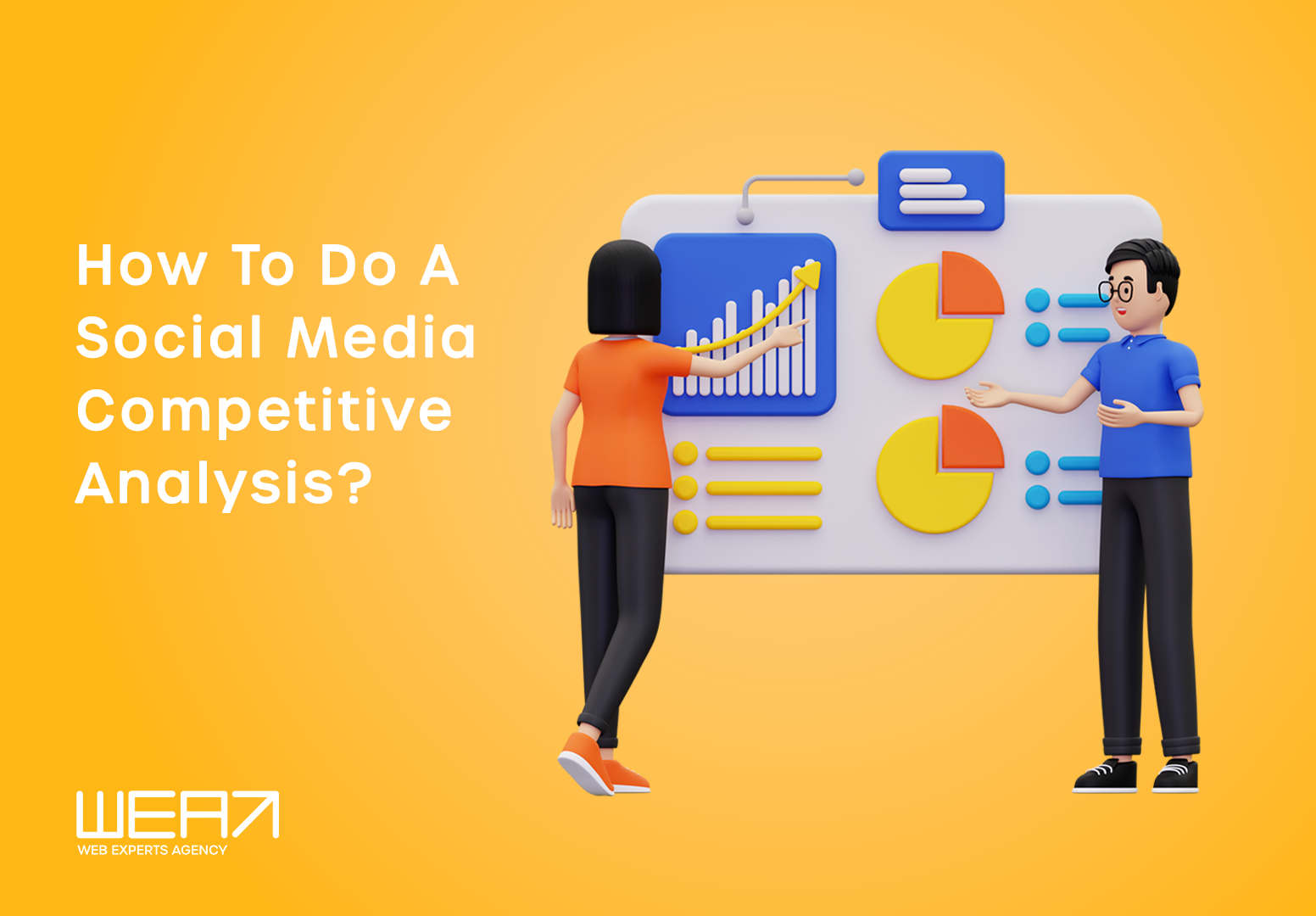
From billboards to timelines, from cold calls to conversations, marketers have ventured far off in their journey – evolving from traditional marketing to the vibrant realm of social media. The transformation is not only a testimonial to our abilities to adapt but also a telltale of social media’s power and its impact beyond our personal lives and leisure activities. Beyond how consumer conducts their lives, social media is now an integral part of how marketers market. It is the heartbeat of modern marketing, pulsating with real-time interactions that stimulate your brand’s narrative to stay in tune with the current state of the world.
However, people who think social media marketing is all about catchy captions and trending timelines are sleeping on its true potential. Today’s world revolves around analytics and data, and social media is swamped with tons and tons of raw data for you to devour. What makes influences gain overnight fame? How do things go viral? Well, it all lies within the many layers of data. Around 328.77 million terabytes of data are generated daily, and social media is a big contributor, with 3.5 billion daily snaps, 2.45 billion shares on Facebook, and 1.58 billion swipes on Tinder. Given the quantum of data available on social media, it has become one of the primary platforms to collect crucial insight, not only about customers but also about competitors.

Social Media And Competitive Analysis
When navigating the strategic landscape, competitive analysis isn’t an optional add-on; it’s a necessity. The business arena isn’t a stroll; skipping a close-up on your competitors is akin to aiming blindfolded. Picture it like embarking on a journey without a reliable guide, wandering through the unknowns, a risky move that can land you in unexpected dead-ends. Competitive analysis secures your path to success with valuable knowledge to base your decisions on. It goes beyond the basics of identifying your rivals. It’s about diving into their strategies, spotting their strong suits, and uncovering their weak spots. With the surge in technology and analytics, the task has become easier with more efficient results, and social media has acted as a gamer changer.
An average person spends around 151 minutes daily on social media, with an overall penetration of 54%. While over half of the global population is on social platforms for an average of 2.5 hours daily, can organisations ask for a better platform? This dynamic digital dimension isn’t just for light-hearted posts and status updates; it’s a treasure chest with insights about your competition. The real-time exchanges, the way they engage, and the sentiments of their followers – social media provides a sneak peek into their modus operandi. Imagine social media as your VIP pass to competitor insights. It’s like being part of their audience, observing how they connect with their customers, what garners applause, and what falls flat. It’s a double-sided mirror showcasing what they do while reflecting on where you stand.

Relying on social media for competitive analysis is an absolute no-brainer. To disregard social media in today’s business landscape would be to overlook a goldmine at your doorstep. It’s like standing before a treasure chest and choosing not to open it. The shift from conventional marketing to the groove of digital social media isn’t just swapping one thing for another; it’s a total makeover. It equips you to navigate through uncharted territories with a trusty built-in GPS – one that thrives on real-time conversations, interactions, and intelligence seamlessly embedded within the virtual corridors of social media.
The Four Building Blocks
Building a solid base for an efficient, competitive analysis on social media includes four building blocks:

Who Is Your Competitor:
Let’s dive into the world of competitive analysis, starting with the crucial step of identifying your competitors. First off, hone in on the keywords that define your playing field. Look at who’s making waves in Google’s rankings for these keywords. Extend your search to social platforms – see which brands appear during keyword-related searches. Additionally, explore the brands that resonate with your audience, even if they’re not direct rivals. To keep things focused and effective, zoom in on around 3 to 5 competitors. This strategic move ensures you gather targeted insights without getting lost in the noise. It’s like having your finger on the pulse of the competition, navigating the dynamic business landscape with precision.
Gathering Crucial Insights About Your Competition’s Social Media Game:
Head over to the social networks of the brands you’ve marked as your key rivals. You can usually find these links in the header or footer of their websites. As we delve into your social media competitive analysis, make sure to focus on the following aspects:
- Start by identifying the platforms they’re active on – where are they carving out their digital presence? Move on to their follower count – gauge the size of their audience and how it’s growing over time.
- Consider who’s leading the pack in terms of followers. These top followers could provide a glimpse into their target audience.
- Pay attention to their posting frequency – how often do they publish content? Is it a constant stream or more intermittent?
- Delve into their engagement rate – how much interaction are their posts generating? This gives you insights into their audience’s level of involvement.
- Assess their social share of voice – what portion of the online conversation are they capturing compared to others in the field?
- Observe their hashtag strategy – which hashtags are they using most frequently? How many do they include in their posts?
Break Down Your Data:
This isn’t just about understanding where you stand; it’s about identifying how to level up your game and what pitfalls to dodge.
Cue the SWOT analysis – a powerful tool like a spotlight for your data. Here’s the breakdown:
- Start by sizing up your strengths and weaknesses. These are the ins and outs of your brand, the stuff you’re nailing and the areas that could use sprucing up.
- Strengths: are the internal advantages that set you apart, enhancing competitiveness and contributing to success.
- Weaknesses: refer to the internal limitations that hinder performance and require attention for overall improvement.
- Shift gears to the external factors: opportunities and threats. These are the happenings in your competitive world that you’ve got to keep an eye on.
- Opportunities: are the open doors, the trends you can capitalize on, the unexplored markets waiting for your magic touch.
- Threats: the hurdles that could trip you up, the changes in the landscape that could throw a curveball at your strategy.
Think of it as a magnifying glass that brings the big picture into sharp focus. Don’t be a part of the 97.5% of companies who cannot complete their projects to 100%. Let the SWOT analysis guide you towards informed strategies and keep you aware of the winds of change blowing in the business battleground.
Ensuring Your Social Media Competitive Analysis Remains Fresh:
Make this a regular part of your quarterly or annual routine to keep your insights on point. But staying in the know requires a continuous supply of real-time data; therefore, you require a robust social media monitoring strategy. It ensures you’re never caught in the dark. Instead, you’re armed with real-time info to inject into your next analysis. It’s a killer move for spotting potential opportunities and threats lurking around.
Now, here’s the nifty part – tools for social media monitoring. Brace yourself for a rundown below. It’s all about staying in tune with the chatter revolving around your brand, your rivals, and your industry. When you stumble upon vital info or events through social media monitoring, jot them down. As you gear up for your next review, these insights can seamlessly fuse into your revised opportunities and threats. It’s like keeping your playbook up-to-date, ready to tackle the next round.
The Donts
While the dos are very crucial to winning at social media competitive analysis, the donts are equally essential to know and avoid:
-
Avoid Copying Blindly:
Directly replicating competitors’ content or strategies can dilute your brand’s uniqueness and authenticity. Instead, take inspiration while tailoring your approach to resonate with your audience.
-
Steer Clear of Obsessive Numbers Focus:
While follower counts matter, don’t get fixated on them. Meaningful engagement and building a loyal community outweigh sheer numbers.
-
Don’t Overlook Smaller Players:
Neglecting smaller competitors might mean missing out on niche insights and unique strategies that could be valuable for your growth.
-
Don’t Neglect Comprehensive Insights:
Relying only on public data can provide a limited view. Utilize social media monitoring tools for a deeper and more holistic analysis.
-
Don’t Disregard Negative Feedback:
Ignoring or dismissing negative comments hinders improvement. Embrace constructive criticism to refine strategies and enhance customer satisfaction, fostering continuous improvement.
Conclusion
From hashtags to trending topics, social media weaves the threads of your marketing strategy into a tapestry of engagement, fostering connections that resonate. As the digital landscape continues its rapid evolution, mastering the art of Social Media Competitive Analysis becomes a pivotal strategy. Beyond mere observation, it’s about delving into trends, deciphering rivals’ playbooks, and extracting insights that shape your brand’s trajectory. Social media acts as the bridge between raw data and strategic innovation, enabling you to stay afloat and sail ahead in the sea of digital possibilities. So, embrace the rhythmic pulse of social media, tap into the symphony of your competitors, and compose a narrative of strategic success that resonates in the digital age. In this dynamic arena, the knowledge gleaned from your competitors’ actions can be your ticket to survival and standing out and thriving amidst the ever-changing tides of the digital world.
FaQs
Q. What metrics should I analyze in a social media competitive analysis?
A. Analyze follower growth, engagement rates, post frequency, and sentiment to gain comprehensive insights.
Q. What tools can help with social media competitive analysis?
A. Tools like SEMrush, Sprout Social, and Hootsuite provide robust features for competitive analysis.
Q. What are the key benefits of conducting a social media competitive analysis?
A. Conducting a social media competitive analysis aids in refining strategies, uncovering trends, and maintaining a competitive edge.
Q. How often should I update my social media competitive analysis?
A. Aim to update your analysis quarterly to ensure insights remain current and actionable.




